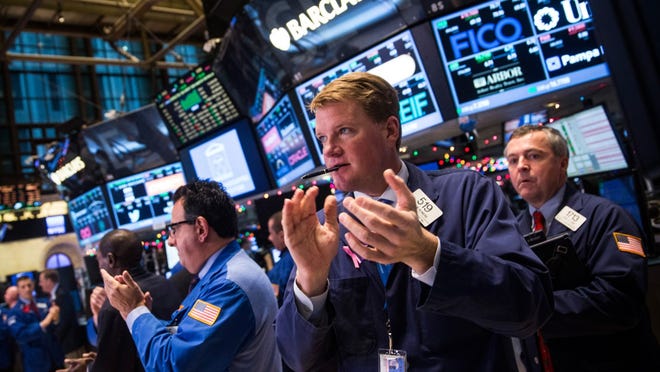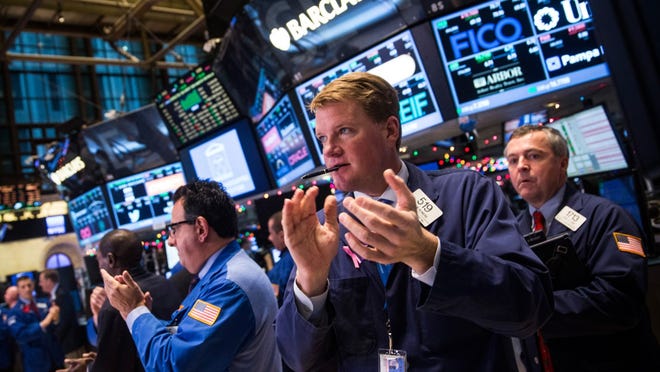
Time is quickly running out for Santa Claus to arrive on Wall Street with a rally, but not everyone has given up hope yet.
After major stock indexes closed lower on Wednesday, with the Nasdaq-100 even ending at its lowest level this year, things were looking bleak for the so-called “Santa Claus rally,” which has occurred 79% of the time since 1950, according to LPL Financial. But a rebound across the major indexes on Thursday is bringing back hope for the late, short-lived rally, which some use as an indicator of what’s to come in the new year.
“It is our first seasonal indicator of the year ahead,” wrote Jeff Hirsch, editor of the Stock Trader’s Almanac & Almanac Investor Newsletter, which uses historical patterns and market seasonality with other measures to predict stock moves. “Years when there was no Santa Claus rally tended to precede bear markets or times when stocks hit significantly lower prices later in the year.”
Still gloomy:Despite stock rally, recession in 2023 is still likely as Fed continues to raise rates
Recovery expected:Here’s why Tesla stock is on track for its worst year and why it could recover in 2023
What is the Santa Claus rally?
The Santa Claus rally typically happens during the last five trading days of the year and the first two of the new year and is usually good for about 1.3% on the benchmark Standard & Poor’s 500 stock index, said Hirsch, whose father Yale Hirsch discovered this pattern and named it the Santa Claus rally.
And as Yale famously and succinctly stated, “If Santa Claus should fail to call, bears may come to Broad and Wall.”
Data bears that out. If Santa delivers a rally, the S&P 500 on average gains 1.3% in January and 10.9% for the new year 75.4% of the time, LPL said.
If Santa’s a no-show, the S&P 500 historically underperforms in January and over the following year. The S&P 500 on average drops 0.3% and returns only 4.1% for the new year 66.7% of the time, LPL said.
Bear markets:All major U.S. stock indices now in bear market on economic fear, S&P 500 ends at 2022 low
Stock crashes:From the archives | Dow’s 500-point crash: Market pros fear further fall of stocks

After an unusual couple of years, though, does Santa Claus rally matter?
The Santa Claus rally isn’t foolproof. It’s just another clue some people will use to try to forecast stock market movements.
Even if Santa doesn’t arrive, some analysts are still bullish on stocks in 2023.
“Let’s not forget that (Federal Reserve Chairman) Jay Powell wrecked a Santa Claus Rally in 2018 when he got very hawkish and talked rates up and then the market basically went into a bear market until Christmas Eve, so I think you want to remain vigilant and focused on the long term,” said Nancy Tengler, CEO and CIO of Laffer Tengler Investments. “I’m expecting a rally, and I’m hoping for a rally, but we don’t know for sure when we will get it.”
Concerning:How high will interest rates rise in 2023? Economists, markets are skeptical of Fed hike plan
Gassing up again:Gas prices are down but projected to rise again. How much will gas cost in 2023?
After no Santa Claus rally in 2018, the S&P 500 returned about 30%.
Between Dec. 20, 2021 and Jan. 4, 2022, a Santa Claus rally pushed the S&P 500 up almost 5%, with the index posting a new closing high on the first trading day of the year. Still, the S&P 500 is down about 20% year to date.
There are also competing patterns coming in 2023, which is the third year of the presidential cycle with the mid-term election year, the weakest of the cycle historically, in the past. Since 1950, the third year of a presidential cycle has averaged a return of 16.8% versus 6.0% for year two, LPL Financial said. Additionally, the first quarter of year three of the presidential cycle also has been the strongest of the four quarters that year, it said.
What will matter for stocks in 2023?
Earnings and the Fed, to name a couple.
“I believe January will test the market, as earnings dominate and the Fed meets (to determine interest rates) Jan 31-Feb 1,” said Howard Silverblatt, senior index analyst at S&P Dow Jones Indices. “If earnings don’t pan out, we could quickly test the 3550 level” in the S&P 500 index. The S&P 500 closed Thursday near 3,850.
Investors should remember “the market is subject to negative headlines as much as positive headlines could underpin a rally,” said Quincy Krosby, chief global strategist at LPL Financial. “If today’s rally transitions into a more substantial bounce, most likely traders will take profits quickly as they lock-in last minute gains following a difficult December” and less likely to lead to “a more forceful rally.”
Medora Lee is a money, markets and personal finance reporter at USA TODAY. You can reach her at [email protected] and subscribe to our free Daily Money newsletter for personal finance tips and business news every Monday through Friday morning.






